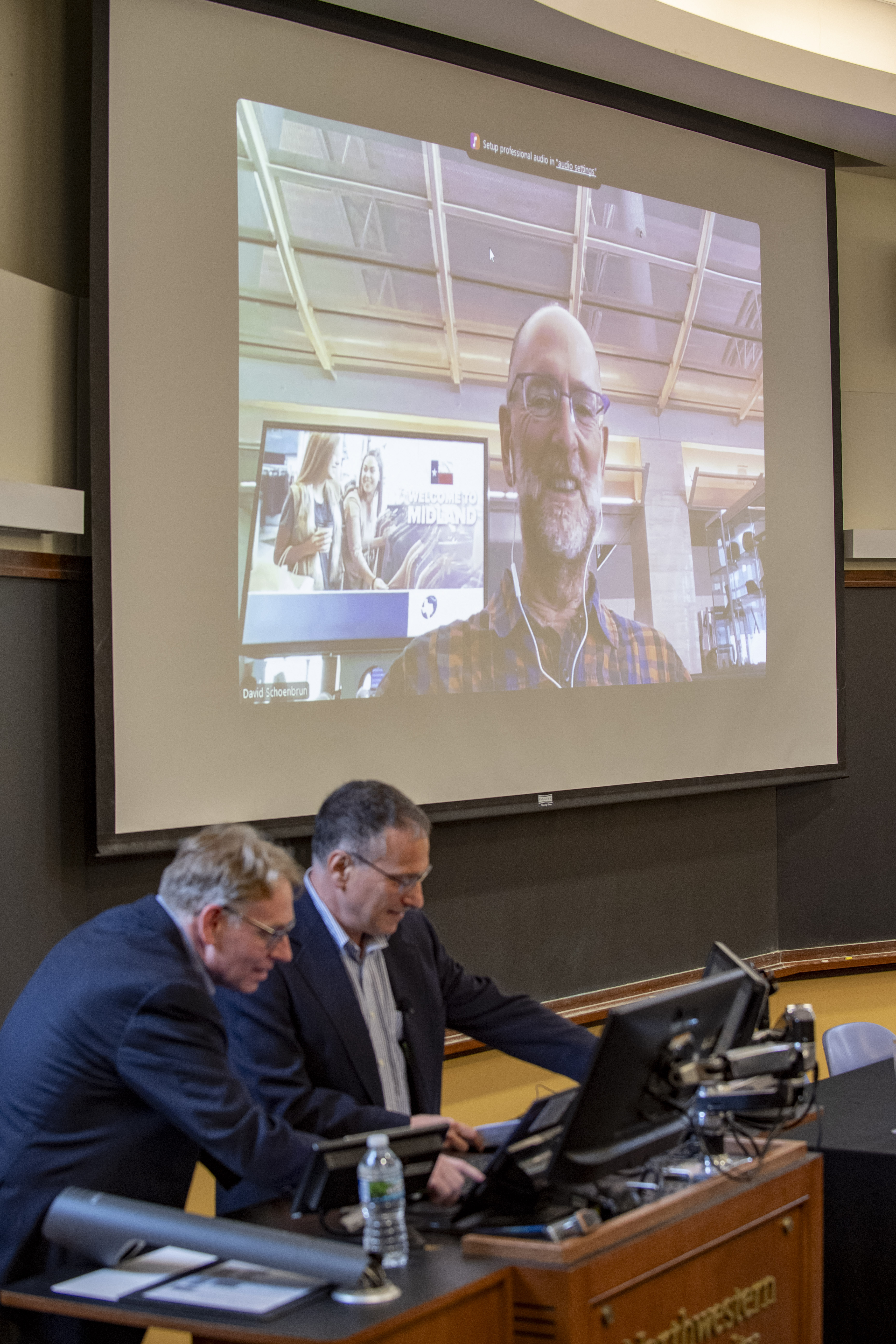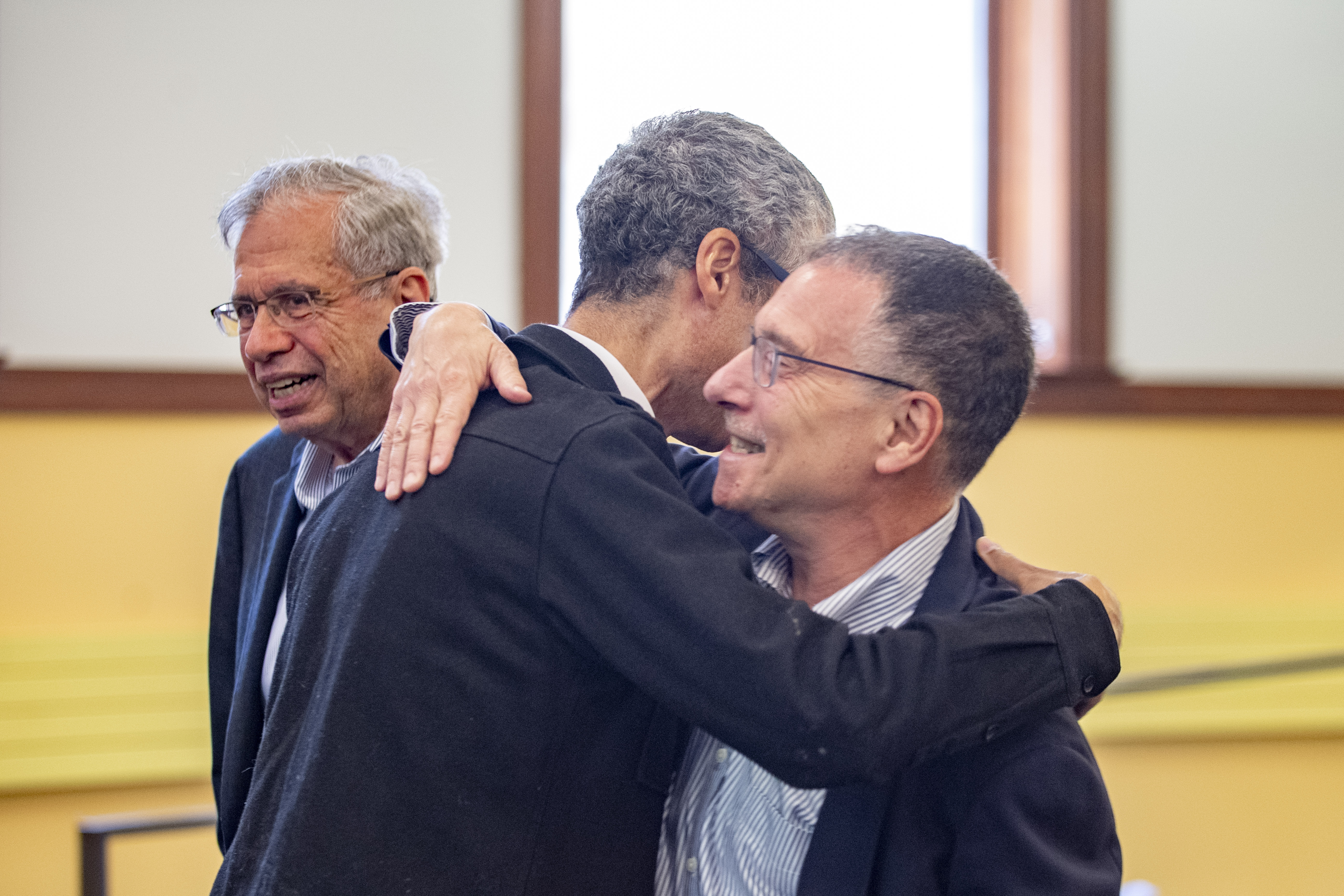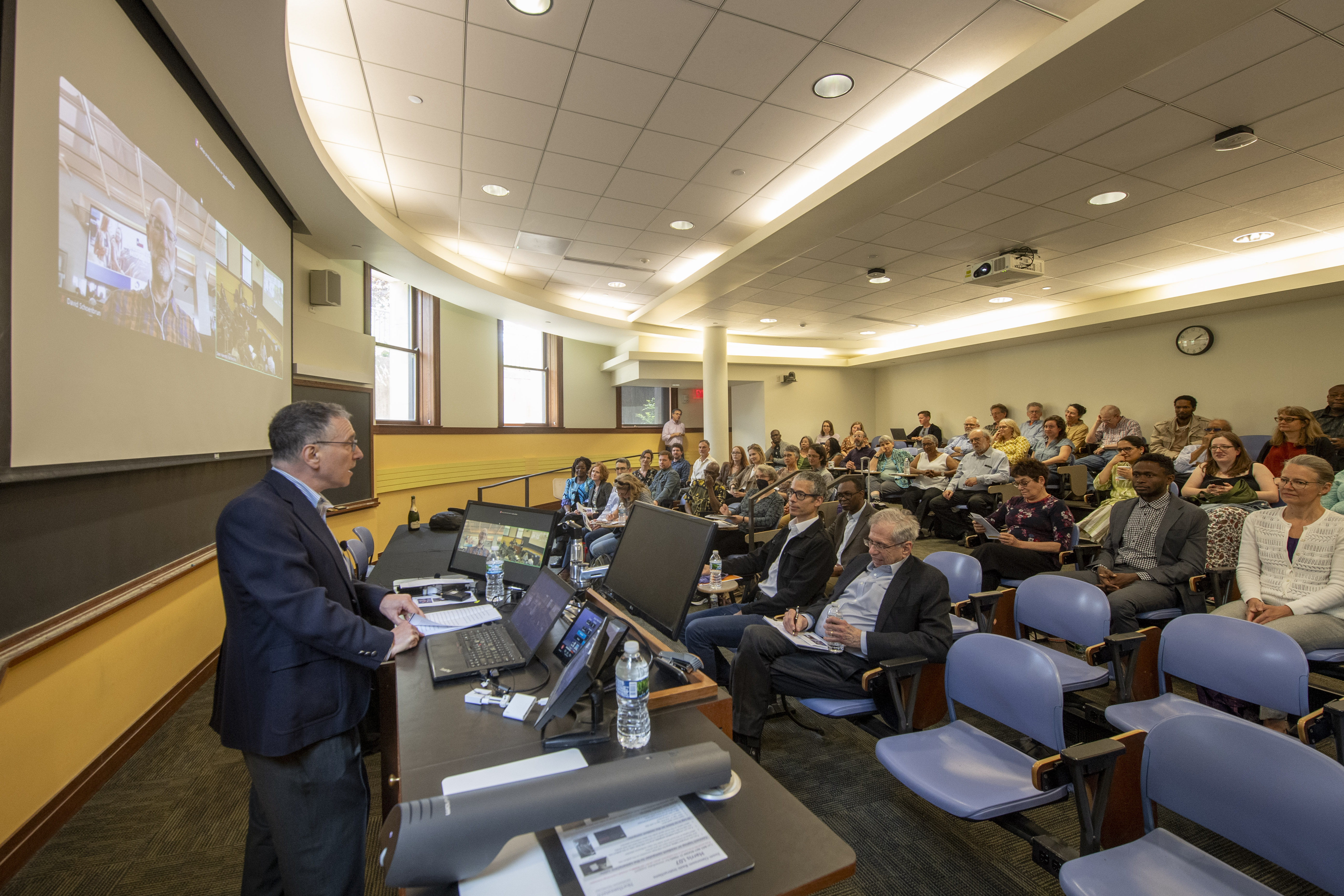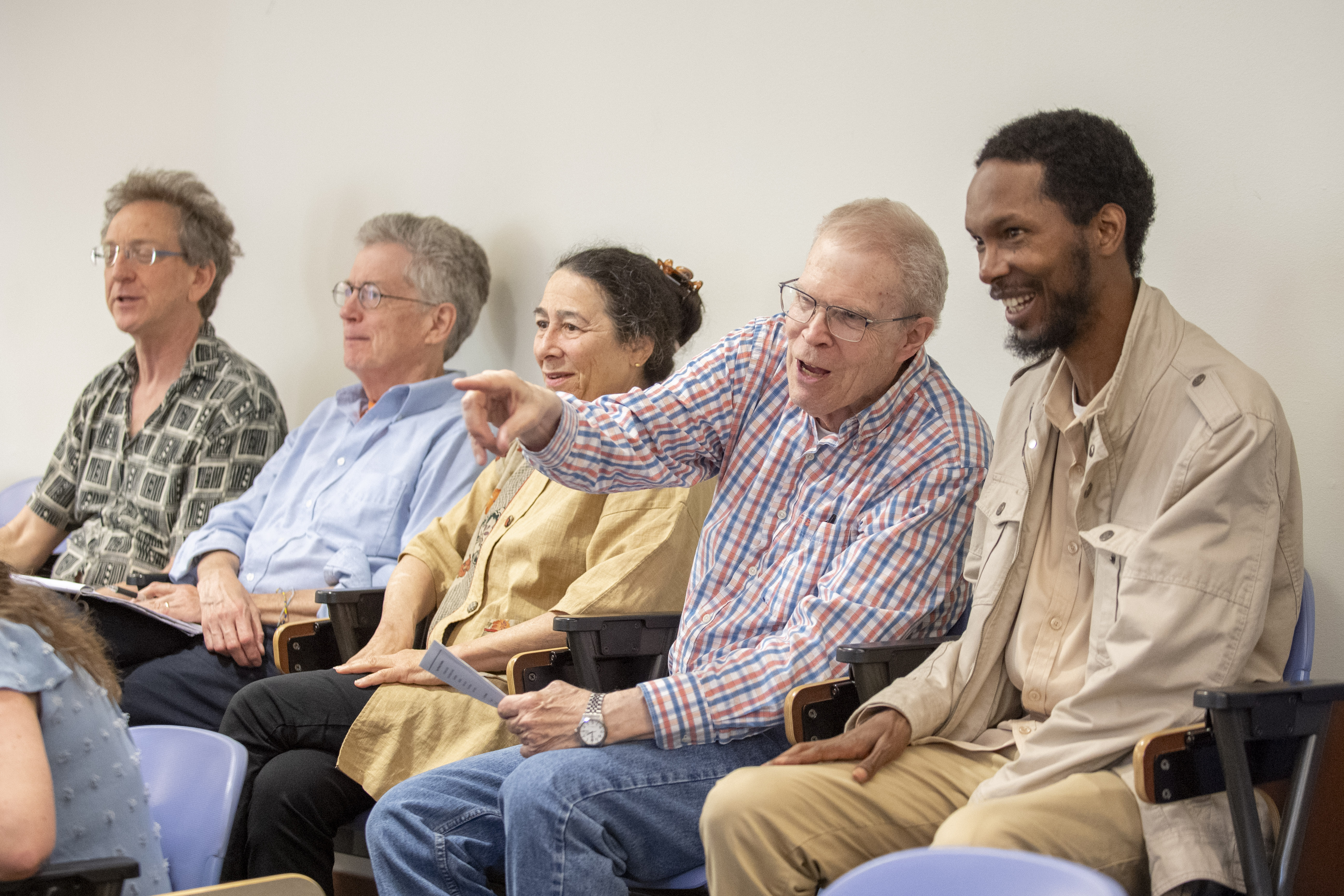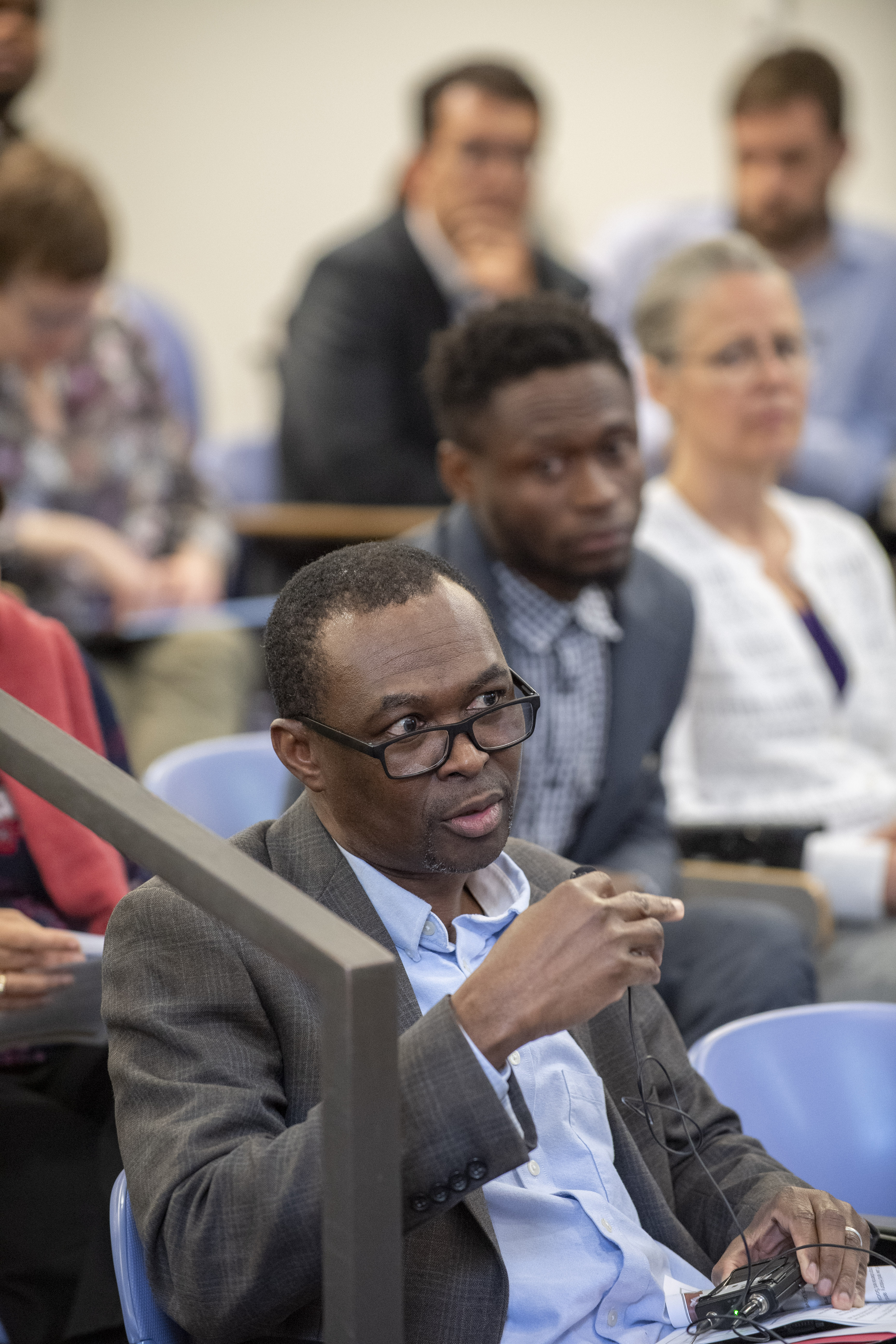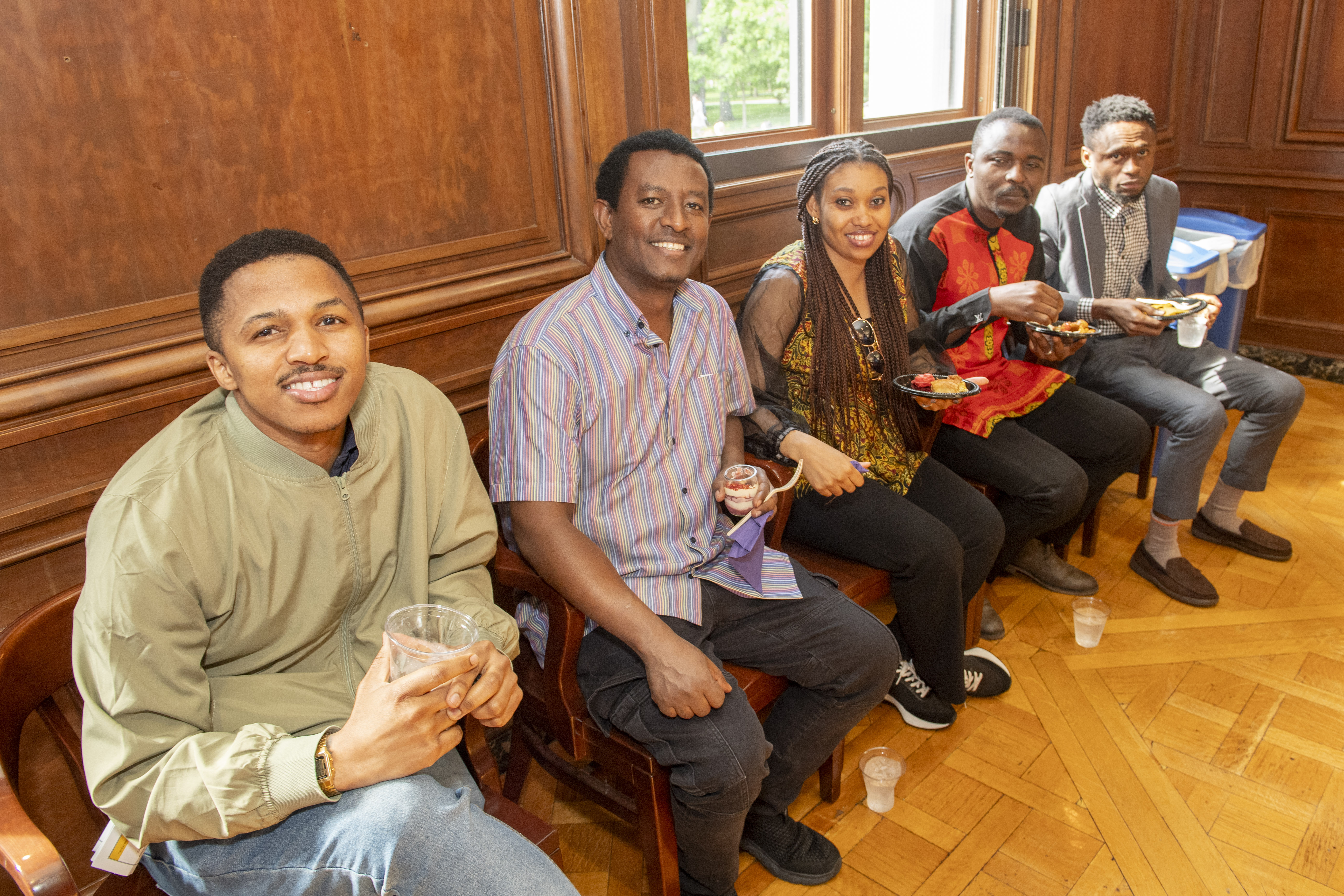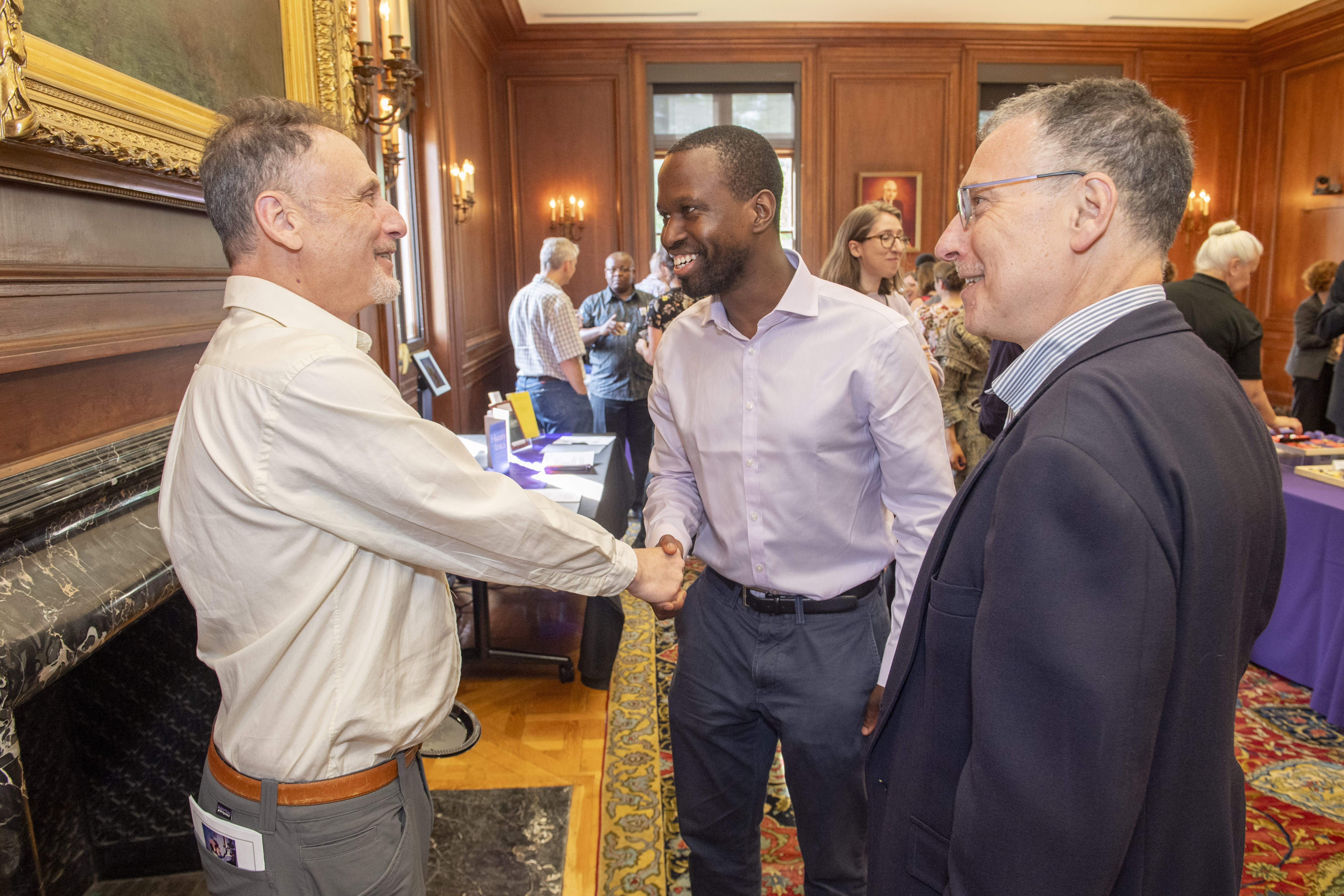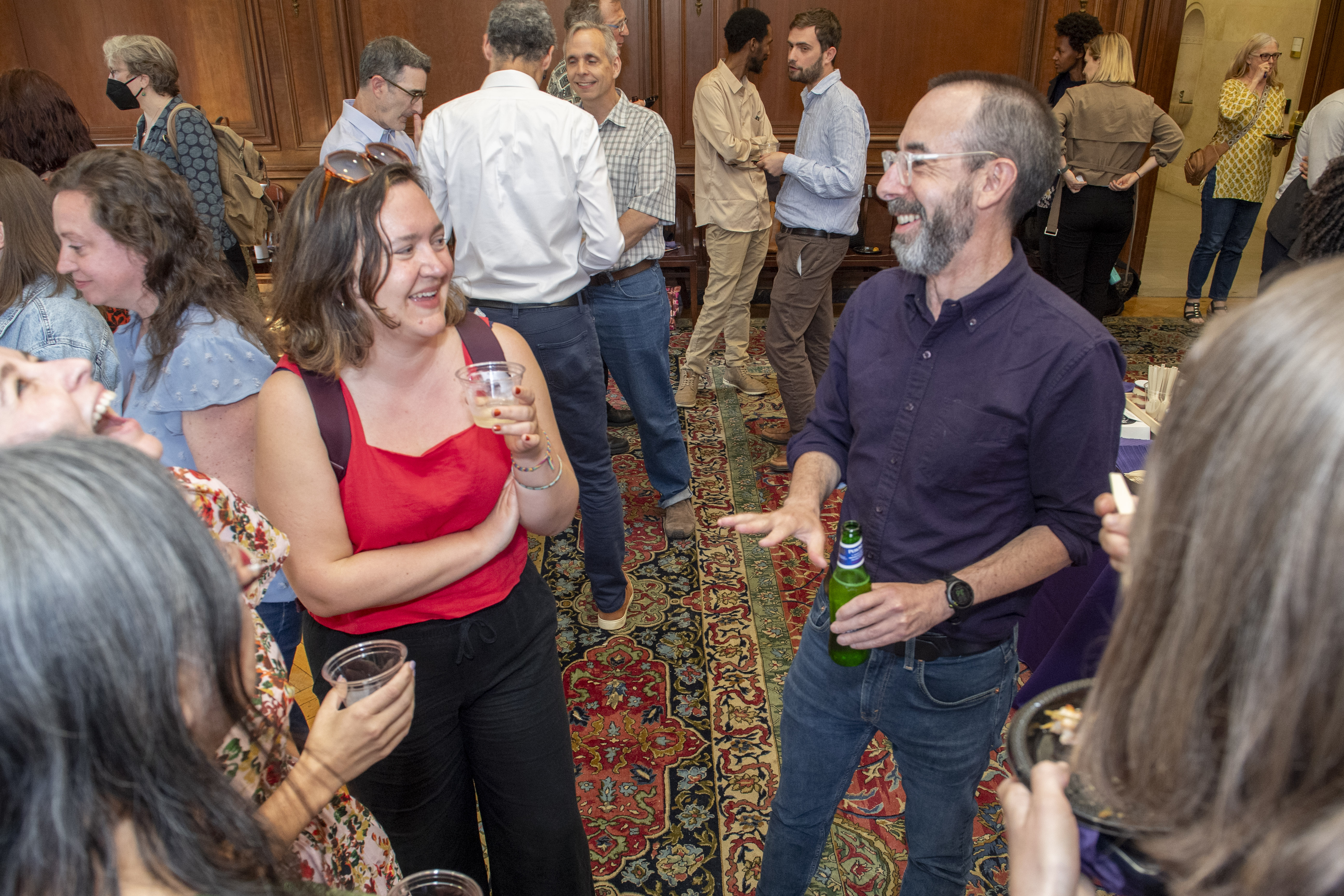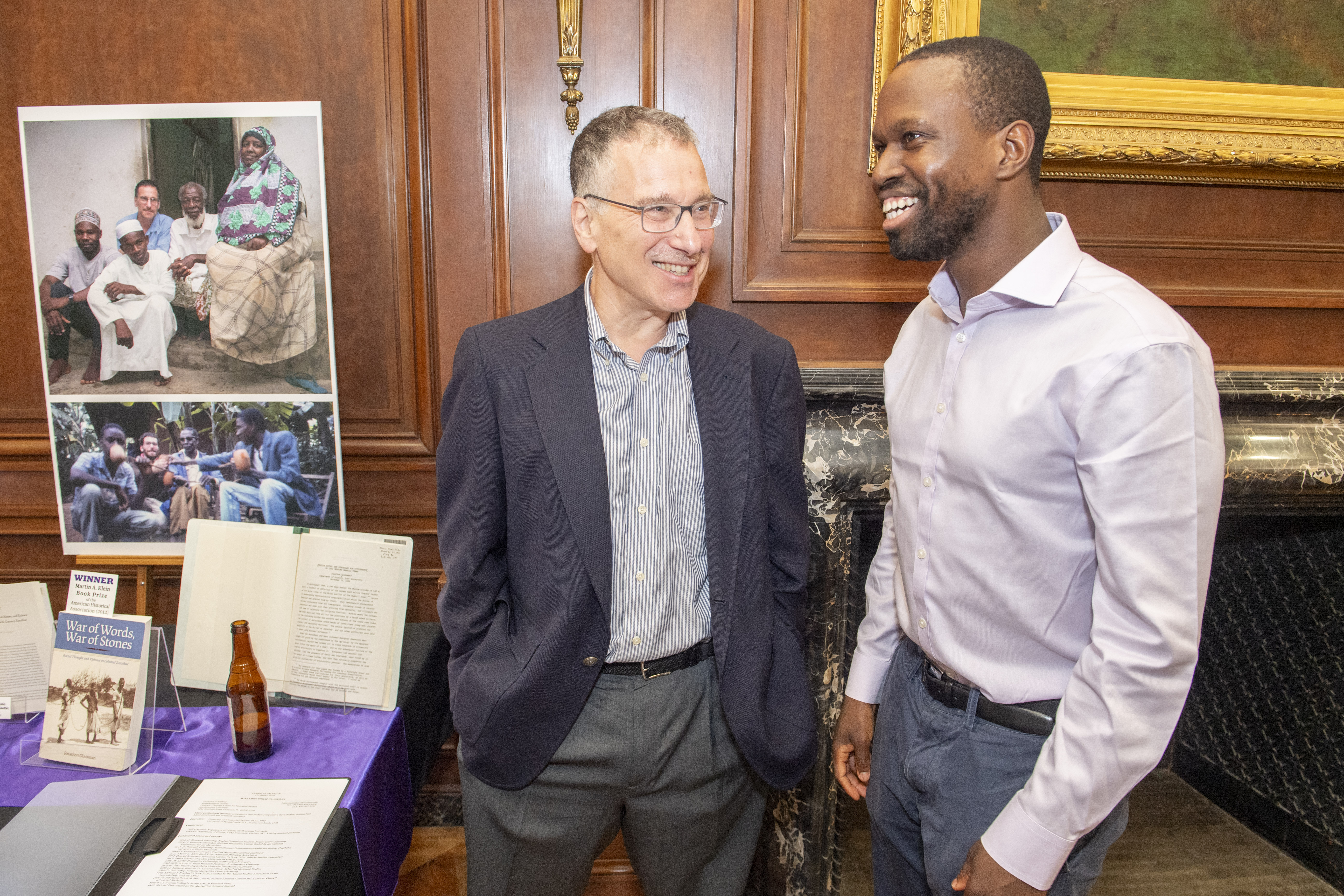Retiree Spotlight: David Schoenbrun
David Schoenbrun
By Jonathon Glassman
On May 31, 2024, colleagues gathered to celebrate the career of David Schoenbrun, who was retiring after twenty-five years at Northwestern, during which he made incalculable contributions to the department, the Program of African Studies, and the broader field of African history.
David is the world’s leading proponent and practitioner of using comparative historical linguistics as a tool for reconstructing the African past. But that statement, impressive as it is, is too technical to capture the breadth of David’s accomplishment. I first encountered David’s work during the search that would land him here. At the time, we had no intention of hiring in David’s field. But one weary afternoon, after spending several hours with disappointing applications, I idly turned to David’s – out of desperation, I confess. I was immediately captivated by the explanation of method with which he started his first book, A Green Place, a Good Place. This wasn’t my first exposure to historical linguistics. But in those opening pages, David made a case that it was possible to reconstruct not just individual words and meanings, but also how and when speakers of now-dead languages combined those words to generate metaphors that reflected changing understandings of their social, political, and spiritual worlds. By combining these methods with a mastery of complementary literature in archaeology and paleoenvironmental studies, David demonstrated that it was possible to reconstruct dimensions of the distant African past that few of us had ever imagined could be recovered.

The spadework required for this kind of linguistic research is arduous and painstaking: the kind of detail-obsessed work that demands the researcher wear lead pants. But it yields the best results when it’s fired by the kind of lively historical imagination that animates David, an imagination that constantly prompts him to raise his eyes to the horizon. David and I used to laugh at the unfortunate blurb that his publisher chose for his first book: a passage in which the reader described it as “serious stuff…solid [and] heavy.” They thought that would sell books! But David’s range, and his ability to bring early African history into conversation with broader audiences, gained wide recognition. His 2006 article in the American Historical Review, for example, which uses the history of public healing in Africa’s Great Lakes region to challenge the distinctions between modernity and the longue-durée and between the global and the local, has resonated far beyond Africanist scholarship. Similar themes play out in a colorful and award-winning documentary film on the Ghanaian bead trade for which he and his partner Kearsley Stewart were the lead scholars.
What David brought to the department and the university can be briefly stated. When the study of African history got underway as a mainstream academic field in the 1960s, it had a strong interdisciplinary emphasis. That emphasis was born in large part of a determination to demonstrate that Africa had a history prior to European presence, a project that, in the absence of internally-generated written documents, demanded ingenious use of unconventional sources. But with a few notable exceptions, that emphasis declined starting in the 1980s, as historians turned increasingly to the twentieth century, for which written sources are plentiful. David has been a central figure in leading the field back to those earlier concerns. I was delighted when in 1999 my colleagues showed the wisdom to hire him as an associate professor from the University of Georgia, where he had been tenured a few years earlier. As a result, Northwestern quickly became the place for the interdisciplinary study of early Africa – and the department can take double pride that this tradition, revived here by David, will continue with the recent arrival of Akin Ogundiran.
David did not accomplish this single-handed: his mentorship of graduate students was a central element of his intellectual agenda and personality. Like the chiefs and other political leaders about whom he writes, he devoted much of his scholarly energy to composing communities. The scope of what he did, and how he did it, is reflected in the words of Joseph C. Miller, the eminent historian of Africa and former president of the AHA. In an interview published just after his death in 2019, Miller was asked about his main scholarly influences. In addition to Philip Curtin and Jan Vansina, intellectual giants who were Miller’s graduate mentors at Wisconsin, he named three: Steve Feierman, who together with Curtin and Vansina shaped the field while at Madison; the anthropologist Jane Guyer, who as director of PAS was instrumental in placing NU back at the center of African Studies in the 1990s; and, said Miller, “David Schoenbrun and particularly his students.”
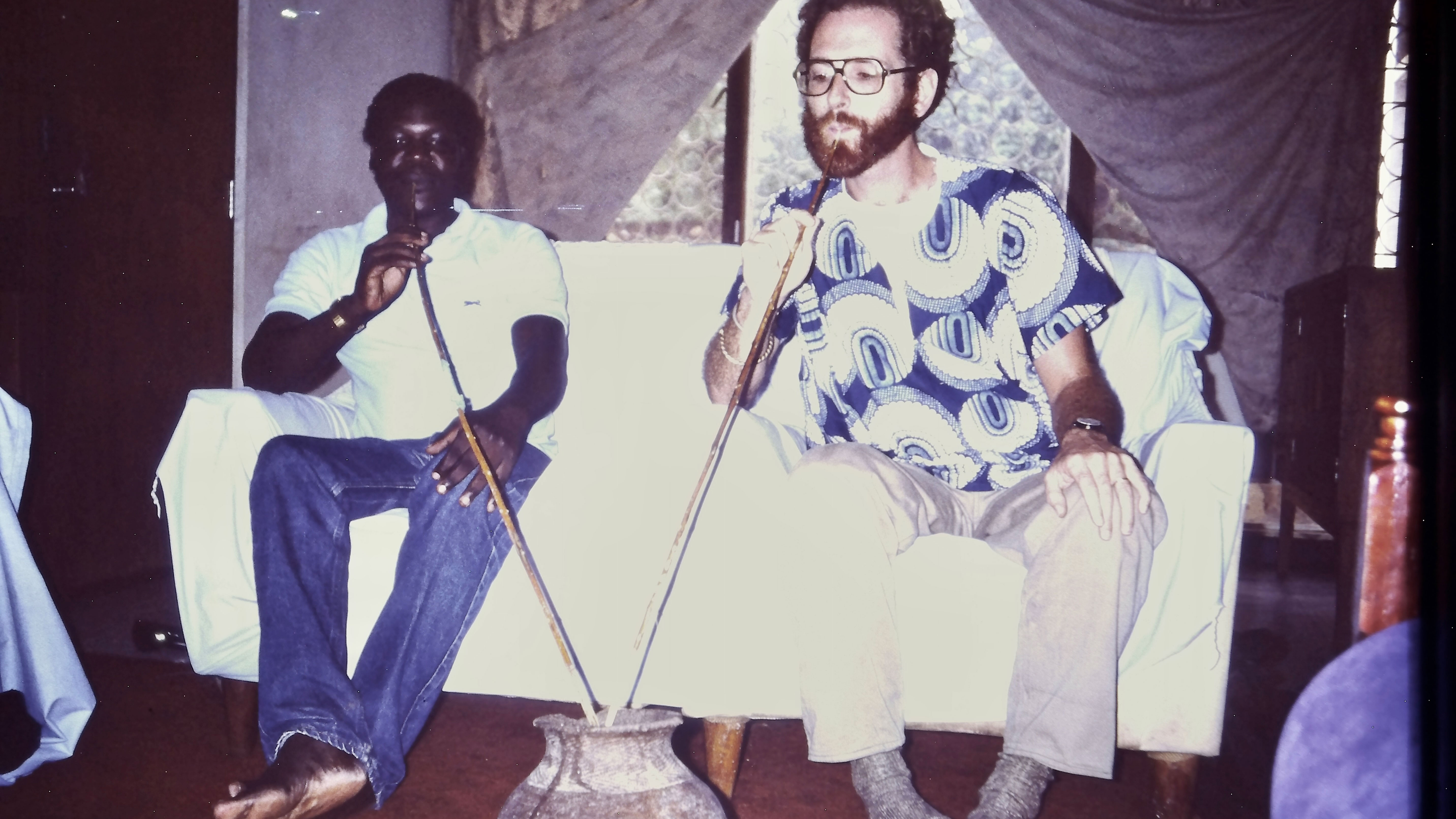
At David’s retirement party, his former students – who flew in from jobs at places like Columbia, Wisconsin, Georgetown, and Makerere – spoke eloquently of his dedication and skill as a graduate advisor. A large part of David's success in this regard is how he approaches the training of graduate students as part of the construction of a collaborative community of scholars. Miller’s comments point to the leadership played not only by David but also by his former students in the current resurgence of early African history. A telling indication of the synergy generated by David is how richly he builds on his former students’ work.
Knowing David’s great capacity for friendship – his genuine interest in others and the pleasure he takes in that interest – it’s not difficult to grasp his success as a collaborative scholar. In this regard, it’s significant that his interest in Africa was piqued by extensive travel before he considered graduate school, finding his way overland from Lamu to Alexandria, at a time when much of the region was plagued by famine and war. David, I’ve learned, travels in the best way: not just to see places, but to connect with the people who live there and who once lived there. I’ve never traveled with him in Africa, but my partner Jim and I spent time with David and Karrie in their beloved American Southwest. David has an infectious enthusiasm for Southwestern archaeology. In a freshly plowed beanfield near land they own near Four Corners, he pointed out the painted potshards strewn about us, just unearthed after centuries. (Jim wanted to take a few to show his shut-in mother, an amateur potter; David insisted we take them only on loan.) He was the perfect guide to Mesa Verde. During our visit, a sudden thunderstorm trapped us in one of the cliff-dwellings, which cling to the sheer canyon walls in alcoves formed by cliff-edges that jut out above. Although the park ranger fretted (lightning strikes are a real hazard on the mesa), we were transfixed, enveloped by a gleaming curtain of rain, as a spout poured generously from the mouth of a rill high up on the cliff-edge. Inspired, no doubt, by what we knew about the meanings of rainfall in East Africa, we could imagine the happy shouts that would have resonated between neighbors on opposite sides of the canyon. During the hike back, David summed up our contentment: “The Old Ones were looking out for us,” he said.
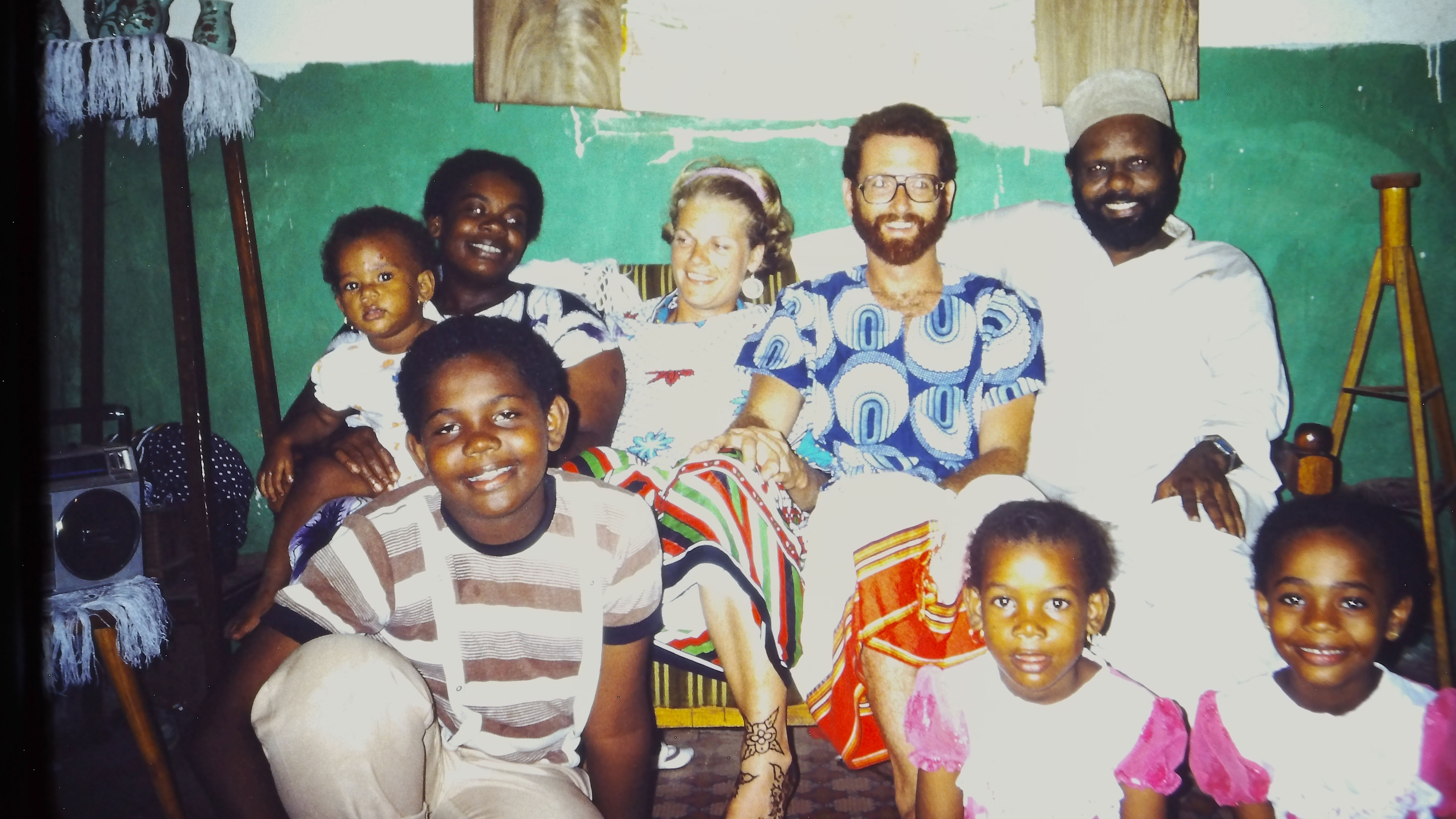
Doing history, as David does it, is a form of travel. Learning what makes people in distant lands tick, how they live, is akin to using our imagination to supplement our sparse sources so we might populate an ancient landscape with people who live, breathe, hope, dream: to reconstruct their conversations, their figures of speech, and their metaphors. (David’s a lover of poetry, by the way. Not surprising, given his own métier.) Our visit helped clear up the puzzle of what David and Karrie see in what always seemed to me an impossibly arid landscape: to David those landscapes aren’t empty; they throb with life. We’ll be back, to return those shards to the Old Ones, and also to learn more from David, about history and friendship.
Photo captions for images above:
- Kasuku, Kigali, 1988. This genius bird—an African Grey Parrot, or Kasuku—could mimic the sound of the car driving up the gravel driveway and the gentle schussing of the brakes as it came to a halt. Karrie and I lived in a house in Butare, Rwanda, with yet another genius Kasuku. That one was free to roam about the house, its primary flight feathers having been clipped. In the morning, Kasuku would climb up on the headboard of the bed, rap sharply against the wood with the tip of its bill and, as we opened our eyes, say bon jour with a perfect Rwandan French accent. Kasuku are intensely social creatures, their captivity in an ex-pat home a cruelty they tried to blunt with their learning.
- Godfrey Okoth and a fresh pot of amarwa (millet beer), Makerere University, 1988. UCLA’s broad networks meant hospitality was often close at hand. Okoth was just ahead of me, in the History grad program. His wife provided this moment of gendered conviviality at a time in Uganda’s history when beer could rarely be bought in stores.
- Mau and Khadija and children, Lamu, 1988. Ten years later, Karrie and I returned to Lamu at the close of my PhD research. A joyous reunion ensued, but not before we made a social error. We’d set a day and a time with Mau for “tea”. Taking “tea” literally, we decided to feast on seafood with a few other friends, in the evening before “tea” time with Mau. As we finished off a mountain of fish and lobster, a young boy called “Hodi” at our guesthouse door. He was ready to escort us across town to Mau’s house. We arrived to find a long, ebony table covered in Swahili dishes of inestimable taste and complexity. Khadija, collapsed on the sofa, had clearly labored all day and well into this night. Karrie and I swallowed and activated the special stomach of such bumbling guests. You can see from the smiles in this picture that we acquitted ourselves well.
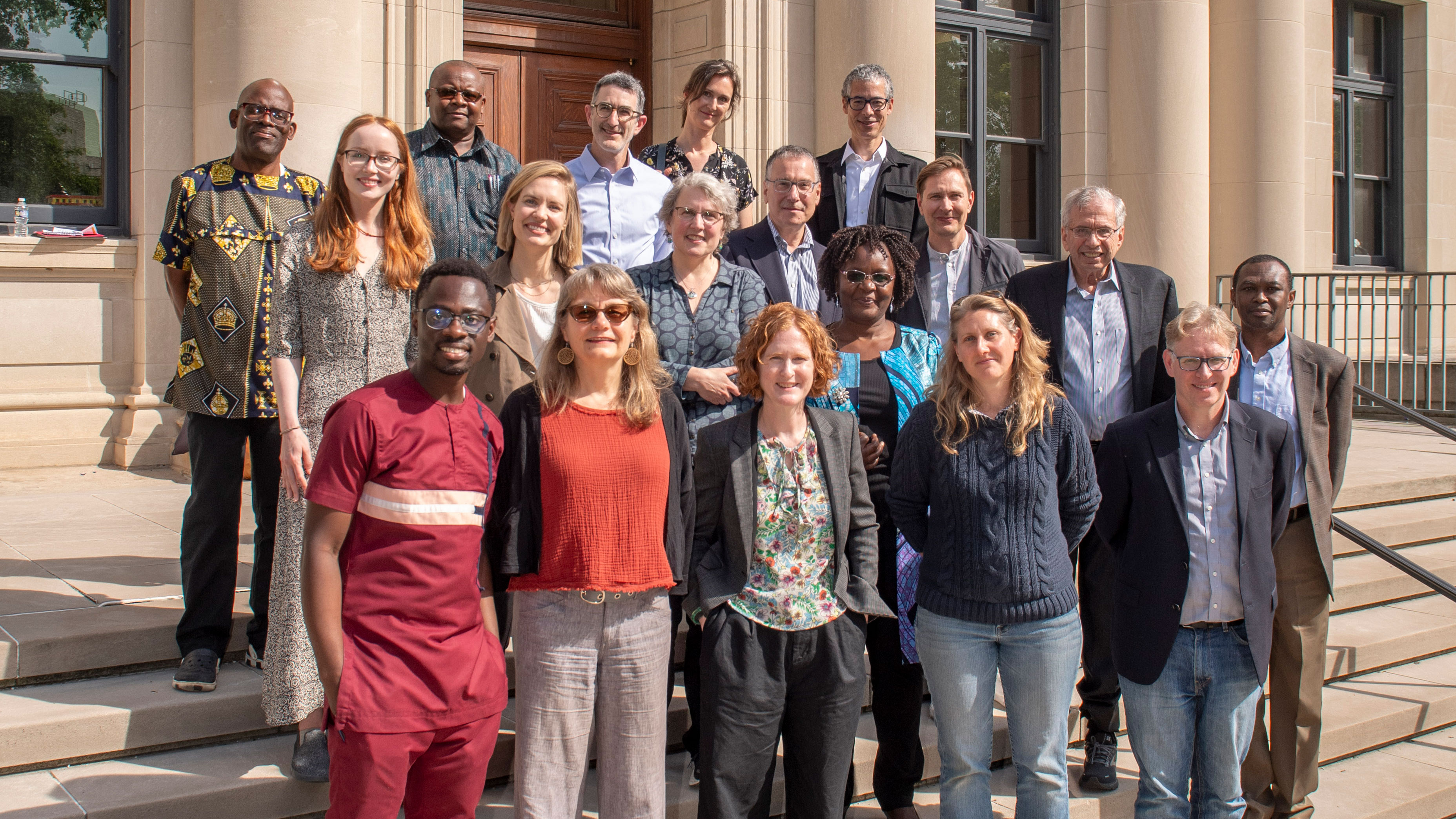
The two-day conference called African History: Past, Present, and Future and celebration for David Schoenbrun and Jonathan Glassman was held in Harris Hall on May 31st to June 1st, 2024. The conference brought together esteemed alumni from the PhD program and friends and family.
View Photos from David Schoenbrun's Retirement Party





